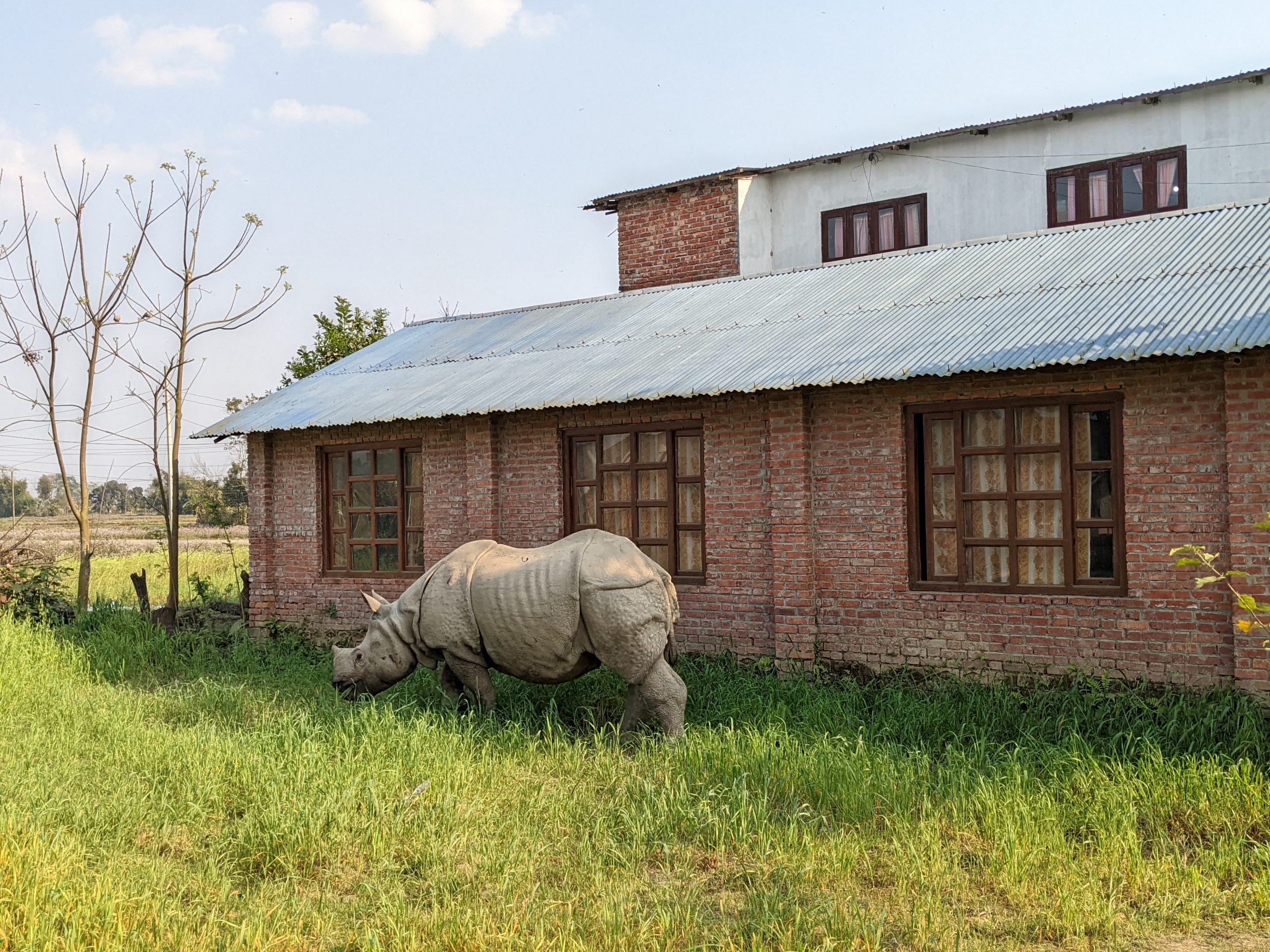Feature image: A greater one-horned rhino peacefully grazes on cropland in the morning, a testament to its remarkable adaptability to human-dominated landscape. (Photo credit: Arockia E J Ferdin)
Imagine a world where humans and wildlife coexist peacefully. This is not a utopian dream, but a reality that can be achieved with the right strategies and policies. Often, conflicts between humans and wildlife are in fact human-human conflicts. These arise from disagreements between different groups of people over how to manage wildlife and allocate resources, reflecting differing values, priorities, and interests within the community.
Local communities—whose livelihoods and well-being are threatened by wildlife—often have different needs and priorities than those of protected area managers. By involving local communities in the management of human-wildlife conflicts, we can ensure that their unique perspectives are considered, thereby balancing biodiversity conservation with community well-being.
Living alongside giants
Human-wildlife interactions are common and frequent in Chitwan National Park in Nepal, as in many other regions globally where agricultural areas border wildlife habitats. The park is renowned for its rich biodiversity, including the majestic one-horned rhinoceros, and is also home to numerous human settlements.
The rhinos are habituated to human presence as communities in Chitwan heavily rely on agriculture, inadvertently attracting wildlife. On my very first day in Chitwan, I saw a rhino walking on the streets, with tens of people taking videos and selfies—a unique experience. Elephants often walk into neighbourhoods at night searching for food, damaging property or crops. After sunset, other wildlife venture into human-occupied landscapes, which they consider as part of their extended habitat.
Community perspectives
Chitwan’s conservation model details the importance of local communities in safeguarding wildlife. But what are the community’s needs and expectations? In a recent study led by Dr Arockia E J Ferdin, we assessed the effectiveness of human-wildlife conflict management strategies from the perspectives of community members in Chitwan. We compared farmers and non-farmers to see if they held different views on these strategies. Our survey not only covered community needs and expectations but also examined the types of wildlife damage and the specific wildlife responsible for it..
Our results highlight that crop raiding was the most common type of wildlife damage, followed by livestock depredation, property damage, and human attacks. The wildlife mostly responsible for these attacks were deer, rhino, wild boar, and elephants. Both farmers and non-farmers suggest that the ability to secure resources and awareness programmes on conflict mitigation need to be sustained. They also agree that the park management should focus on equipping people with skills needed to diversify their income sources—creating and supporting new economic opportunities for communities, and quick relief payments for wildlife damages.
We anticipate that our results will guide the park management in making informed decisions in allocating resources to manage conflicts, thereby gaining the local communities’ trust and fulfilling their needs while also benefiting wildlife. Human-wildlife conflicts will continue to be a problem for the park management as wildlife continue to take refuge in human settlements. With climate change intensifying these conflicts, our findings can influence park management policies to further the global objective of living in harmony with nature.
Fostering coexistence is a top priority for conservation management. The key question remains: will park management achieve their intended goal of increasing positive interactions between humans and wildlife?
Further Reading:
Ferdin, A. E. J., U. C. Aryal, N. Dhungana, B. R. Lamichhane, J. W. Chook and C.H. Lee. 2024. Prioritising human-wildlife conflict management strategies through importance-performance analysis: Insights from Chitwan National Park, Nepal. Journal for Nature Conservation 81: 126675. https://doi.org/10.1016/j.jnc.2024.126675.






